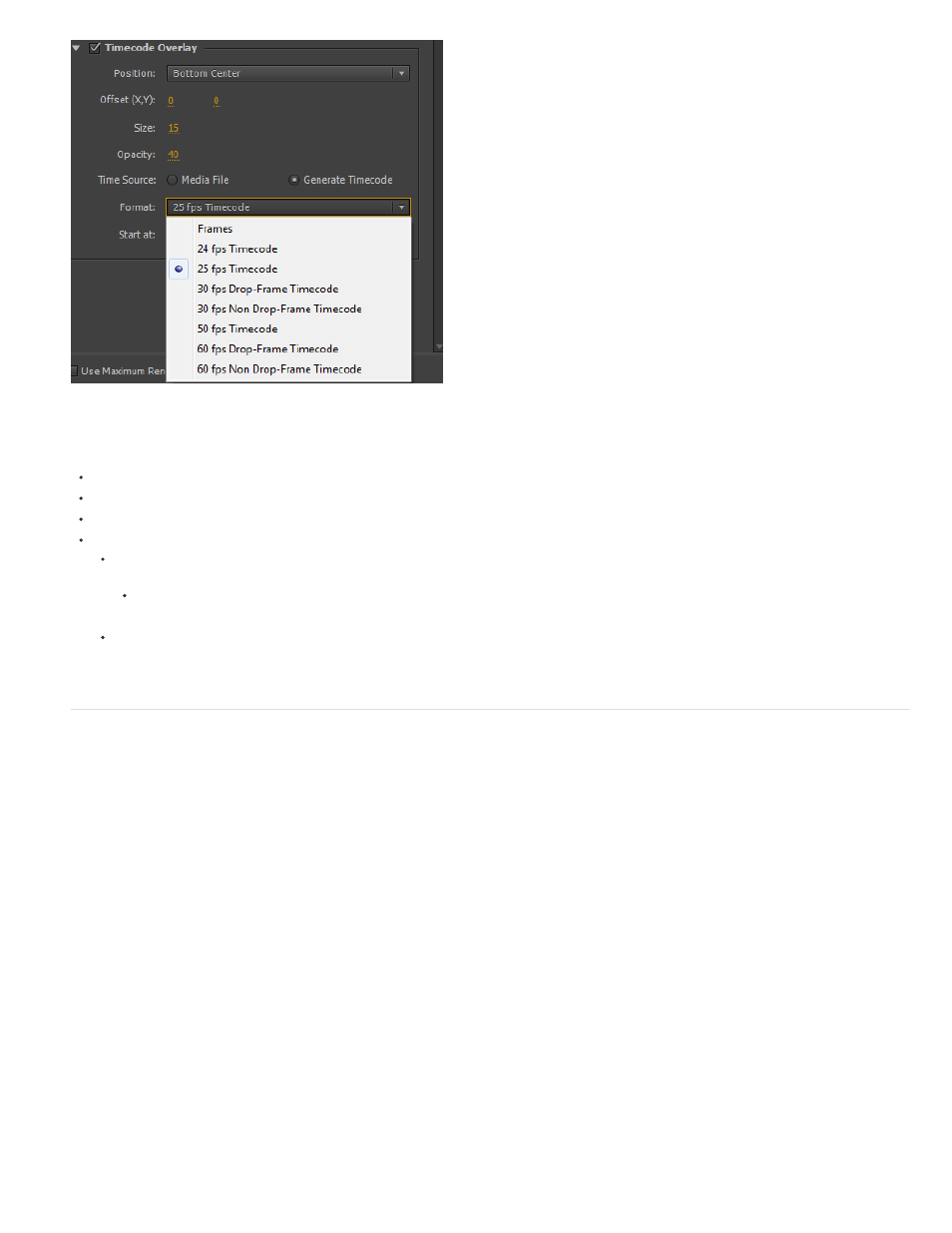Video exports settings – Adobe Media Encoder User Manual
Page 63

Note:
TV Standard
Frame Dimensions
Overlays a timecode on your video output. The following additional options are available for the Timecode Overlay effect:
Position - Sets the relative position of the timecode within the output frame. For example, Center, Top left, Top Center
Offset - Lets you adjust the horizontal and vertical offsets (in pixels) of the timecode within the output frame
Size - Adjusts the size of the timecode
Time Source - Specifies how timecode is generated
Media File - Reads Timecode from the source media. If the source media is not detected, timecode overlay starts at zero and matches
the source's frame rate.
Offset in Frames - Specifies the number of frames by which the source timecode should be offset. You can give either positive or
negative values for this offset.
Generate Timecode - Lets you specify custom timecode to overlay over the video. When this option is selected, choose a frame rate and
counting method from the Format drop-down menu. You can also specify a custom starting Timecode.
Video exports settings
Adobe Media Encoder is used both as a standalone application and as a component of Adobe Premiere Pro, After Effects, and Flash Professional.
In some contexts—including rendering and exporting from Premiere Pro—you set encoding options in the full Adobe Media Encoder Export
Settings dialog box. In other contexts—including rendering and exporting from After Effects—you set encoding options in a format-specific Options
dialog box that only presents a subset of the encoding options.
Adobe Media Encoder ships with many presets, each of which sets the various options to meet the requirements for a common target output. In
the Export Settings or format-specific Options dialog box, the options available on the Video tab depend on the format you’ve specified.
Options not documented here are either specific to the selected format or do not require documentation. For detailed information, consult the
specifications for the selected format. For example, MPEG formats include many advanced options not listed here. For detailed information on
options not listed, consult the specifications for the MPEG-2 (ISO/IEC 13818) format and the
Some capture cards and plug-in software provide their own dialog boxes with specific options. If the options you see are different from the
options described here, see the documentation for your capture card or plug-in.
For general information about compression settings, see
Conforms the output to the NTSC standard or to the PAL standard. When set to Automatic (Based On Source), Adobe Media
Encoder automatically sets this value to match the source. For example, if the source file frame rate is 25 fps, Adobe Media Encoder sets the TV
standard to PAL.
Dimensions, in pixels, of the output frame. When set to Automatic (Based On Source), Adobe Media Encoder automatically
61
